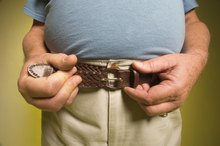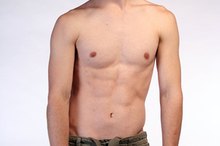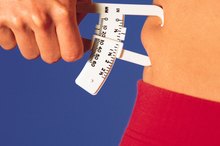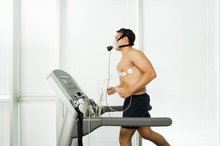Accuracy of the Caliper Test for Body Fat
Accuracy varies among fitness-assessment protocols and should be considered when choosing methods of body-fat testing. For example, skinfold measurement, or the caliper test, is rated highly for accessibility and not as high for accuracy of estimation, as stated by “ACSM’s Guidelines for Exercise Testing and Prescription” by the American College of Sports Medicine. Understanding your options enables proper health classification and fitness-related goal-setting.
Body Composition Explained
While standard scales assess quantity of body weight instead of quality, evaluation of body composition identifies the percentage of your weight composed of fat. An unhealthy body composition increases your risk of weight-related health issues such as diabetes and heart disease. Therefore, ACSM recommends a body-fat percentage of 10 to 22 percent for men and 20 to 32 percent for women.
Caliper Technique
Muscle Mass & BMI
Learn More
Calipers measure subcutaneous fat, or fat located directly under your skin, by lightly pinching fat folds at different body sites. Estimation equations consider caliper data — along with height, weight and age information — when estimating your percent fat. Measurements should occur on the right side of your body, pinches should be held for two to five seconds and administrators should rotate between multiple sites at least twice, as stated by the ACSM.
Measurement Locations
Depending on the method being used, skinfold measurement occurs at three to seven sites on your body. Generally, a positive relationship exists between number of sites measured and accuracy of results. Site options include your stomach, triceps, biceps, chest, midaxillary, subscapular, suprailiac and thigh. Triceps are located on the back of your arm — between your shoulder and elbow, biceps are opposite your triceps, midaxillary measurement occurs on your right side — halfway between your shoulder and hip bone, subscapular measurement occurs 2 cm below your right shoulder blade, and suprailiac measurement occurs directly above your right hip bone.
Accuracy of Estimation
Do Handheld Bodyfat Monitors Work?
Learn More
According to Vivian H. Heyward, author of “Advanced Fitness Assessment and Exercise Prescription,” caliper-test accuracy depends on test-administrator proficiency, caliper model and choice of estimation equation. For example, metal calipers offer greater accuracy than plastic calipers, and testing expertise requires a minimum of 200 practice trials over time, says Heyward. Under ideal conditions, caliper-tests predict fat percentage within plus or minus 3.5 percent of your true body composition, as defined by ACSM.
Considerations
According to the ACSM, skinfold assessment assumes close to one-third of total body fat is located subcutaneously. However, exact proportions vary with sex, age and ethnicity. In addition, ACSM advises against caliper testing for people with obesity or underweight. Consult your local gym or university for assessment opportunities near you.
Related Articles
References
- “American College of Sports Medicine’s Guidelines for Exercise Testing and Prescription”; American College of Sports Medicine; 2006
- “Advanced Fitness Assessment and Exercise Prescription”; Vivian H. Heyward; 2006
Writer Bio
Melissa Ross began writing professionally in 2009, with work appearing in various online publications. She has been an American Council on Exercise certified personal trainer since 2006. Ross holds a Bachelor of Science in kinesiology from California Polytechnic State University, San Luis Obispo and a Master of Science in kinesiology from California State University, Fullerton.









